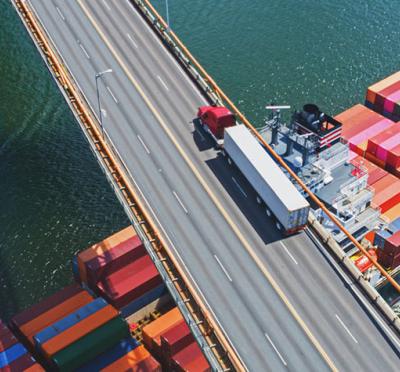
When Nick Clark earned his bachelor’s degree in civil engineering from Oregon State University in 1997, he never imagined he’d be rappelling from the top of the Golden Gate Bridge, or into a newly formed crater in the spillway of the country’s tallest dam, Oroville Dam. Since completing his training in industrial rope access in 2008, his unique skill set has taken him to 30 different states to perform bridge inspections. Some of the work was fear-inducing at first, he said, but as he gradually expanded his comfort zone, it has become exciting.
While the trip down the towers of San Francisco’s iconic bridge has been one of the highest-profile projects Clark has worked on, it was by no means the toughest. That honor, Clark said, would probably go to a small bridge in the Sierra Nevada. It was late in the year, and the roads had already started to become impassible. But the bridge was past its inspection date, so Clark trekked over 6 miles round-trip in snowshoes to complete the inspection. “The demand for the kind of work that I do has grown significantly over the last 20 years as the nation’s infrastructure expands and ages,” Clark said. “Bridges need to be inspected regularly to ensure their safety.”
Of all the things he learned at Oregon State, Nick Clark (’97 B.S., Civil Engineering) said learning how to work as part of a team was one of the most important.
In the past, government agencies performed bridge inspections themselves, but they are increasingly contracting the work out to companies like the one Clark works for, HDR Engineering. The technology has also evolved over the years. When he first started, Clark took pictures of problem areas with his 35 mm camera, rushed to a one-hour photo center to get prints, cut them by hand, and pasted them into his reports. Now, everything is done digitally. Drone inspection has been used experimentally and will likely become more prominent as the technology develops and regulations change.
Still, Clark said, there’s no substitute for a close-up inspection with a hammer, scraper, and wire brush in hand.
“Sometimes you need to remove paint and rust to see the extent of the damage, or apply force to see if any connections are loose,” he said.
Of all the things he learned at Oregon State, Clark said learning how to work as part of a team was one of the most important.
“When I’m rappelling down a bridge, I’ve put my life in the hands of my team members, so we need to be able to trust each other,” he said. As for the Golden Gate Bridge, Clark said it is in good shape for an 82-year-old structure that is continuously subjected to harsh marine conditions. He also cautioned that lack of funding in some parts of the country is causing problems with aging infrastructure. Thankfully, he noted, Oregon’s bridges are largely in very good condition.



